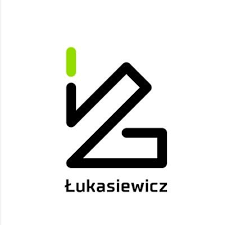List of Tables
Table 1. Global Female Hypoactive Sexual Desire Disorder Therapeutics Market Size Growth Rate by Type (US$ Million): 2018 VS 2022 VS 2029
Table 2. Key Players of BP-101
Table 3. Key Players of Bremelanotide
Table 4. Key Players of Gepirone Hydrochloride ER
Table 5. Key Players of PVT-011
Table 6. Key Players of Others
Table 7. Global Female Hypoactive Sexual Desire Disorder Therapeutics Market Size Growth by Application (US$ Million): 2018 VS 2022 VS 2029
Table 8. Global Female Hypoactive Sexual Desire Disorder Therapeutics Market Size by Region (US$ Million): 2018 VS 2022 VS 2029
Table 9. Global Female Hypoactive Sexual Desire Disorder Therapeutics Market Size by Region (2018-2023) & (US$ Million)
Table 10. Global Female Hypoactive Sexual Desire Disorder Therapeutics Market Share by Region (2018-2023)
Table 11. Global Female Hypoactive Sexual Desire Disorder Therapeutics Forecasted Market Size by Region (2024-2029) & (US$ Million)
Table 12. Global Female Hypoactive Sexual Desire Disorder Therapeutics Market Share by Region (2024-2029)
Table 13. Female Hypoactive Sexual Desire Disorder Therapeutics Market Trends
Table 14. Female Hypoactive Sexual Desire Disorder Therapeutics Market Drivers
Table 15. Female Hypoactive Sexual Desire Disorder Therapeutics Market Challenges
Table 16. Female Hypoactive Sexual Desire Disorder Therapeutics Market Restraints
Table 17. Global Female Hypoactive Sexual Desire Disorder Therapeutics Revenue by Players (2018-2023) & (US$ Million)
Table 18. Global Female Hypoactive Sexual Desire Disorder Therapeutics Market Share by Players (2018-2023)
Table 19. Global Top Female Hypoactive Sexual Desire Disorder Therapeutics Players by Company Type (Tier 1, Tier 2, and Tier 3) & (based on the Revenue in Female Hypoactive Sexual Desire Disorder Therapeutics as of 2022)
Table 20. Ranking of Global Top Female Hypoactive Sexual Desire Disorder Therapeutics Companies by Revenue (US$ Million) in 2022
Table 21. Global 5 Largest Players Market Share by Female Hypoactive Sexual Desire Disorder Therapeutics Revenue (CR5 and HHI) & (2018-2023)
Table 22. Key Players Headquarters and Area Served
Table 23. Key Players Female Hypoactive Sexual Desire Disorder Therapeutics Product Solution and Service
Table 24. Date of Enter into Female Hypoactive Sexual Desire Disorder Therapeutics Market
Table 25. Mergers & Acquisitions, Expansion Plans
Table 26. Global Female Hypoactive Sexual Desire Disorder Therapeutics Market Size by Type (2018-2023) & (US$ Million)
Table 27. Global Female Hypoactive Sexual Desire Disorder Therapeutics Revenue Market Share by Type (2018-2023)
Table 28. Global Female Hypoactive Sexual Desire Disorder Therapeutics Forecasted Market Size by Type (2024-2029) & (US$ Million)
Table 29. Global Female Hypoactive Sexual Desire Disorder Therapeutics Revenue Market Share by Type (2024-2029)
Table 30. Global Female Hypoactive Sexual Desire Disorder Therapeutics Market Size by Application (2018-2023) & (US$ Million)
Table 31. Global Female Hypoactive Sexual Desire Disorder Therapeutics Revenue Market Share by Application (2018-2023)
Table 32. Global Female Hypoactive Sexual Desire Disorder Therapeutics Forecasted Market Size by Application (2024-2029) & (US$ Million)
Table 33. Global Female Hypoactive Sexual Desire Disorder Therapeutics Revenue Market Share by Application (2024-2029)
Table 34. North America Female Hypoactive Sexual Desire Disorder Therapeutics Market Size Growth Rate by Country (US$ Million): 2018 VS 2022 VS 2029
Table 35. North America Female Hypoactive Sexual Desire Disorder Therapeutics Market Size by Country (2018-2023) & (US$ Million)
Table 36. North America Female Hypoactive Sexual Desire Disorder Therapeutics Market Size by Country (2024-2029) & (US$ Million)
Table 37. Europe Female Hypoactive Sexual Desire Disorder Therapeutics Market Size Growth Rate by Country (US$ Million): 2018 VS 2022 VS 2029
Table 38. Europe Female Hypoactive Sexual Desire Disorder Therapeutics Market Size by Country (2018-2023) & (US$ Million)
Table 39. Europe Female Hypoactive Sexual Desire Disorder Therapeutics Market Size by Country (2024-2029) & (US$ Million)
Table 40. Asia-Pacific Female Hypoactive Sexual Desire Disorder Therapeutics Market Size Growth Rate by Region (US$ Million): 2018 VS 2022 VS 2029
Table 41. Asia-Pacific Female Hypoactive Sexual Desire Disorder Therapeutics Market Size by Region (2018-2023) & (US$ Million)
Table 42. Asia-Pacific Female Hypoactive Sexual Desire Disorder Therapeutics Market Size by Region (2024-2029) & (US$ Million)
Table 43. Latin America Female Hypoactive Sexual Desire Disorder Therapeutics Market Size Growth Rate by Country (US$ Million): 2018 VS 2022 VS 2029
Table 44. Latin America Female Hypoactive Sexual Desire Disorder Therapeutics Market Size by Country (2018-2023) & (US$ Million)
Table 45. Latin America Female Hypoactive Sexual Desire Disorder Therapeutics Market Size by Country (2024-2029) & (US$ Million)
Table 46. Middle East & Africa Female Hypoactive Sexual Desire Disorder Therapeutics Market Size Growth Rate by Country (US$ Million): 2018 VS 2022 VS 2029
Table 47. Middle East & Africa Female Hypoactive Sexual Desire Disorder Therapeutics Market Size by Country (2018-2023) & (US$ Million)
Table 48. Middle East & Africa Female Hypoactive Sexual Desire Disorder Therapeutics Market Size by Country (2024-2029) & (US$ Million)
Table 49. Emotional Brain BV Company Detail
Table 50. Emotional Brain BV Business Overview
Table 51. Emotional Brain BV Female Hypoactive Sexual Desire Disorder Therapeutics Product
Table 52. Emotional Brain BV Revenue in Female Hypoactive Sexual Desire Disorder Therapeutics Business (2018-2023) & (US$ Million)
Table 53. Emotional Brain BV Recent Development
Table 54. GlaxoSmithKline Plc Company Detail
Table 55. GlaxoSmithKline Plc Business Overview
Table 56. GlaxoSmithKline Plc Female Hypoactive Sexual Desire Disorder Therapeutics Product
Table 57. GlaxoSmithKline Plc Revenue in Female Hypoactive Sexual Desire Disorder Therapeutics Business (2018-2023) & (US$ Million)
Table 58. GlaxoSmithKline Plc Recent Development
Table 59. Palatin Technologies Inc Company Detail
Table 60. Palatin Technologies Inc Business Overview
Table 61. Palatin Technologies Inc Female Hypoactive Sexual Desire Disorder Therapeutics Product
Table 62. Palatin Technologies Inc Revenue in Female Hypoactive Sexual Desire Disorder Therapeutics Business (2018-2023) & (US$ Million)
Table 63. Palatin Technologies Inc Recent Development
Table 64. Pivot Pharmaceuticals Inc Company Detail
Table 65. Pivot Pharmaceuticals Inc Business Overview
Table 66. Pivot Pharmaceuticals Inc Female Hypoactive Sexual Desire Disorder Therapeutics Product
Table 67. Pivot Pharmaceuticals Inc Revenue in Female Hypoactive Sexual Desire Disorder Therapeutics Business (2018-2023) & (US$ Million)
Table 68. Pivot Pharmaceuticals Inc Recent Development
Table 69. Strategic Science & Technologies LLC Company Detail
Table 70. Strategic Science & Technologies LLC Business Overview
Table 71. Strategic Science & Technologies LLC Female Hypoactive Sexual Desire Disorder Therapeutics Product
Table 72. Strategic Science & Technologies LLC Revenue in Female Hypoactive Sexual Desire Disorder Therapeutics Business (2018-2023) & (US$ Million)
Table 73. Strategic Science & Technologies LLC Recent Development
Table 74. Research Programs/Design for This Report
Table 75. Key Data Information from Secondary Sources
Table 76. Key Data Information from Primary Sources
List of Figures
Figure 1. Global Female Hypoactive Sexual Desire Disorder Therapeutics Market Size Comparison by Type (2023-2029) & (US$ Million)
Figure 2. Global Female Hypoactive Sexual Desire Disorder Therapeutics Market Share by Type: 2022 VS 2029
Figure 3. BP-101 Features
Figure 4. Bremelanotide Features
Figure 5. Gepirone Hydrochloride ER Features
Figure 6. PVT-011 Features
Figure 7. Others Features
Figure 8. Global Female Hypoactive Sexual Desire Disorder Therapeutics Market Size Comparison by Application (2023-2029) & (US$ Million)
Figure 9. Global Female Hypoactive Sexual Desire Disorder Therapeutics Market Share by Application: 2022 VS 2029
Figure 10. Out-Patient Case Studies
Figure 11. In-Patient Case Studies
Figure 12. Female Hypoactive Sexual Desire Disorder Therapeutics Report Years Considered
Figure 13. Global Female Hypoactive Sexual Desire Disorder Therapeutics Market Size (US$ Million), Year-over-Year: 2018-2029
Figure 14. Global Female Hypoactive Sexual Desire Disorder Therapeutics Market Size, (US$ Million), 2018 VS 2022 VS 2029
Figure 15. Global Female Hypoactive Sexual Desire Disorder Therapeutics Market Share by Region: 2022 VS 2029
Figure 16. Global Female Hypoactive Sexual Desire Disorder Therapeutics Market Share by Players in 2022
Figure 17. Global Top Female Hypoactive Sexual Desire Disorder Therapeutics Players by Company Type (Tier 1, Tier 2, and Tier 3) & (based on the Revenue in Female Hypoactive Sexual Desire Disorder Therapeutics as of 2022)
Figure 18. The Top 10 and 5 Players Market Share by Female Hypoactive Sexual Desire Disorder Therapeutics Revenue in 2022
Figure 19. North America Female Hypoactive Sexual Desire Disorder Therapeutics Market Size YoY Growth (2018-2029) & (US$ Million)
Figure 20. North America Female Hypoactive Sexual Desire Disorder Therapeutics Market Share by Country (2018-2029)
Figure 21. United States Female Hypoactive Sexual Desire Disorder Therapeutics Market Size YoY Growth (2018-2029) & (US$ Million)
Figure 22. Canada Female Hypoactive Sexual Desire Disorder Therapeutics Market Size YoY Growth (2018-2029) & (US$ Million)
Figure 23. Europe Female Hypoactive Sexual Desire Disorder Therapeutics Market Size YoY Growth (2018-2029) & (US$ Million)
Figure 24. Europe Female Hypoactive Sexual Desire Disorder Therapeutics Market Share by Country (2018-2029)
Figure 25. Germany Female Hypoactive Sexual Desire Disorder Therapeutics Market Size YoY Growth (2018-2029) & (US$ Million)
Figure 26. France Female Hypoactive Sexual Desire Disorder Therapeutics Market Size YoY Growth (2018-2029) & (US$ Million)
Figure 27. U.K. Female Hypoactive Sexual Desire Disorder Therapeutics Market Size YoY Growth (2018-2029) & (US$ Million)
Figure 28. Italy Female Hypoactive Sexual Desire Disorder Therapeutics Market Size YoY Growth (2018-2029) & (US$ Million)
Figure 29. Russia Female Hypoactive Sexual Desire Disorder Therapeutics Market Size YoY Growth (2018-2029) & (US$ Million)
Figure 30. Nordic Countries Female Hypoactive Sexual Desire Disorder Therapeutics Market Size YoY Growth (2018-2029) & (US$ Million)
Figure 31. Asia-Pacific Female Hypoactive Sexual Desire Disorder Therapeutics Market Size YoY Growth (2018-2029) & (US$ Million)
Figure 32. Asia-Pacific Female Hypoactive Sexual Desire Disorder Therapeutics Market Share by Region (2018-2029)
Figure 33. China Female Hypoactive Sexual Desire Disorder Therapeutics Market Size YoY Growth (2018-2029) & (US$ Million)
Figure 34. Japan Female Hypoactive Sexual Desire Disorder Therapeutics Market Size YoY Growth (2018-2029) & (US$ Million)
Figure 35. South Korea Female Hypoactive Sexual Desire Disorder Therapeutics Market Size YoY Growth (2018-2029) & (US$ Million)
Figure 36. Southeast Asia Female Hypoactive Sexual Desire Disorder Therapeutics Market Size YoY Growth (2018-2029) & (US$ Million)
Figure 37. India Female Hypoactive Sexual Desire Disorder Therapeutics Market Size YoY Growth (2018-2029) & (US$ Million)
Figure 38. Australia Female Hypoactive Sexual Desire Disorder Therapeutics Market Size YoY Growth (2018-2029) & (US$ Million)
Figure 39. Latin America Female Hypoactive Sexual Desire Disorder Therapeutics Market Size YoY Growth (2018-2029) & (US$ Million)
Figure 40. Latin America Female Hypoactive Sexual Desire Disorder Therapeutics Market Share by Country (2018-2029)
Figure 41. Mexico Female Hypoactive Sexual Desire Disorder Therapeutics Market Size YoY Growth (2018-2029) & (US$ Million)
Figure 42. Brazil Female Hypoactive Sexual Desire Disorder Therapeutics Market Size YoY Growth (2018-2029) & (US$ Million)
Figure 43. Middle East & Africa Female Hypoactive Sexual Desire Disorder Therapeutics Market Size YoY Growth (2018-2029) & (US$ Million)
Figure 44. Middle East & Africa Female Hypoactive Sexual Desire Disorder Therapeutics Market Share by Country (2018-2029)
Figure 45. Turkey Female Hypoactive Sexual Desire Disorder Therapeutics Market Size YoY Growth (2018-2029) & (US$ Million)
Figure 46. Saudi Arabia Female Hypoactive Sexual Desire Disorder Therapeutics Market Size YoY Growth (2018-2029) & (US$ Million)
Figure 47. Emotional Brain BV Revenue Growth Rate in Female Hypoactive Sexual Desire Disorder Therapeutics Business (2018-2023)
Figure 48. GlaxoSmithKline Plc Revenue Growth Rate in Female Hypoactive Sexual Desire Disorder Therapeutics Business (2018-2023)
Figure 49. Palatin Technologies Inc Revenue Growth Rate in Female Hypoactive Sexual Desire Disorder Therapeutics Business (2018-2023)
Figure 50. Pivot Pharmaceuticals Inc Revenue Growth Rate in Female Hypoactive Sexual Desire Disorder Therapeutics Business (2018-2023)
Figure 51. Strategic Science & Technologies LLC Revenue Growth Rate in Female Hypoactive Sexual Desire Disorder Therapeutics Business (2018-2023)
Figure 52. Bottom-up and Top-down Approaches for This Report
Figure 53. Data Triangulation
Figure 54. Key Executives Interviewed

